General salt knowledge
Everything you always wanted to know about salt:
 1. What is salt actually?
1. What is salt actually?1. What is salt actually?
When we’re talking about salt, we usually mean table salt. In nature, salt occurs in two forms: dissolved in water (as brine or seawater) or in solid form (as rock salt).
But what is salt actually? It is a mineral that consists of the elements sodium (Na) and chlorine (Cl) and is designated chemically as sodium chloride (NaCl). In a solid state, sodium and chlorine combine on the molecular level in a cube shape at a ratio of 1:1. Since the chlorine atoms are larger and heavier, the resulting weight distribution is 40% sodium and 60% chlorine.
Everyone has noticed that salt dissolves in water – the crystalline structure disintegrates. And what else happens? Electrically charged particles (ions) are formed. The sodium ions carry the positive charge, the chlorine ions the negative charge. The positive and negative charges cancel each other, resulting in an electrically neutral solution.
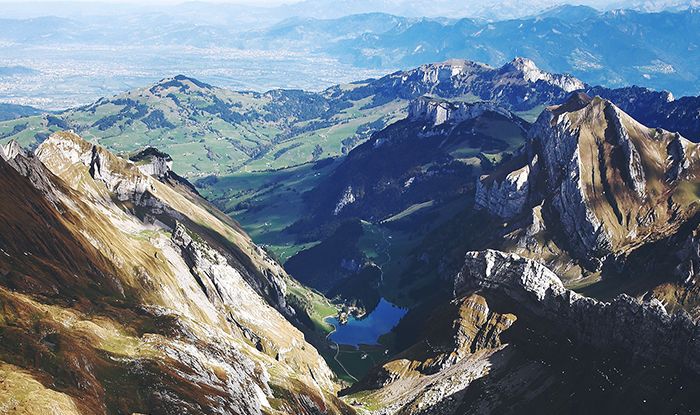 2. How did salt get into the Alps?
2. How did salt get into the Alps?2. How did salt get into the Alps?
Salt is so taken for granted in the home today that we rarely consider the fact that the salt we use for seasoning was formed when the primeval ocean evaporated. About 250 million years ago, separated water basins were formed at the edge of the primeval ocean. When the water evaporated, salts crystallized and were deposited at the base of these basins.
This resulted in salt domes, which, in the course of many thousands of years, were buried deep under the rocks and covered by the earth as a result of tectonic movements and the folding of the Alps. There, in the depths of the Alps, the salt has remained preserved in its pure, original form.
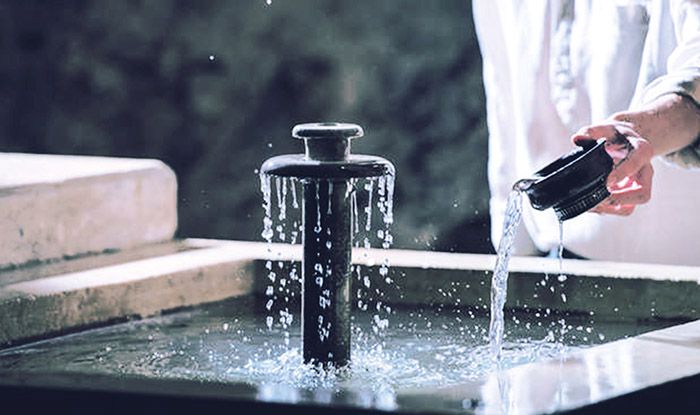 3. What is alpine brine?
3. What is alpine brine?3. What is alpine brine?
Very slowly, clear mountain water releases the salt from the rock, forming pure alpine brine – the natural source of all Bad Reichenhaller products.
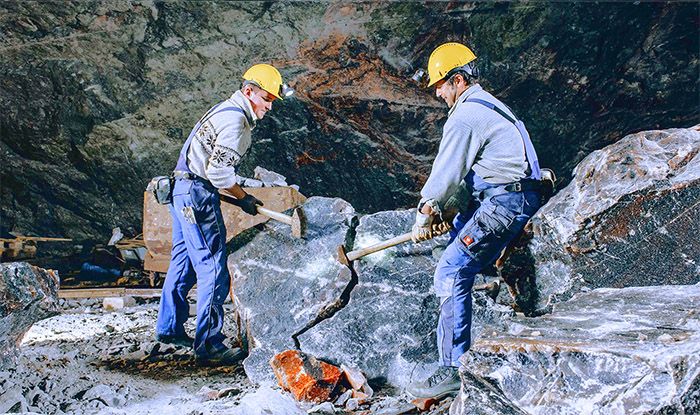 4. How does alpine brine become Bad Reichenhaller AlpenSalz?
4. How does alpine brine become Bad Reichenhaller AlpenSalz?4. How does alpine brine become Bad Reichenhaller AlpenSalz?
The alpine brine is collected in hollow spaces and subterranean lakes. The Celts already mined salt from these brine springs. Today, the subterranean brine stores are accessed by means of deep holes and are pumped through pipelines into the Bad Reichenhall salt works – about 250,000 m³ annually.
At the Bad Reichenhall salt works, the alpine brine is first diverted into a huge container, freed of other salts, and brought to a boil in the evaporation plant. The water evaporates, and the salt crystallizes. An energy-saving method is used for this process. The salt mush (a mixture of salt and brine) is centrifuged and then dried. The result: pure AlpenSalz.
 5. Since when have humans been using salt?
5. Since when have humans been using salt?5. Since when have humans been using salt?
Salt is one of the oldest foodstuffs in human history. Archaeological findings have proven that is has been used regularly since about 10,000 BC. Wherever humans found salt and water, they could establish new settlements.
The history of salt production can be traced back to the dawn of human history. But how did humans first make salt? Probably from seawater – by natural evaporation. The first sophisticated methods of salt production were discovered to have been used by the Romans and Celts: among other things, they used the natural brine springs in the Alps.
Humans also discovered early on that salt not only gives food a special flavor, but also has preservative properties. For this reason, “white gold” became an important trade product transported over long distances. Trade needs trade routes – then and now. During Roman times, “salt roads” were created, including the Via Salaria, one of the oldest streets in Italy. In the Middle Ages, such transport routes were also constructed in Germany: for example, the Bavarian salt road stretching from Reichenhall, passing through Munich and Landsberg am Lech, and ending in Lake Constance.
Salt production grew steadily – in the 16th century, up to 36,000 tons of salt were produced annually in Hallein (Austria) and Reichenhall. Trade was professionalized, and specified trade routes had to be strictly observed. After all, salt taxes, road duties, and trade rights – so-called “staple rights” – brought in more revenue for cities and sovereigns than the salt itself.
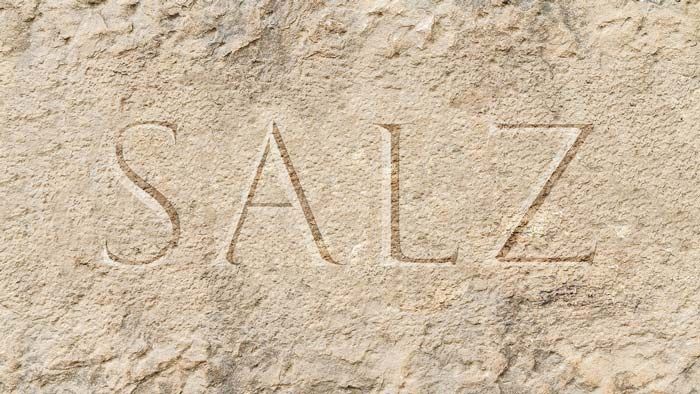 6. Where does the word “salt” come from?
6. Where does the word “salt” come from?6. Where does the word “salt” come from?
The word “salt,” like the German term “Salz,” was formed from the Latin word “salarium.” This word itself originated from “Salus,” the name of the Roman god of wisdom, who was responsible for general growth and prosperity. Roman civil servants and soldiers received a ration of salt for their journeys, called “salarium.” The connection of this with the word “salary” is obvious – even if payment with salt is now a distant memory.
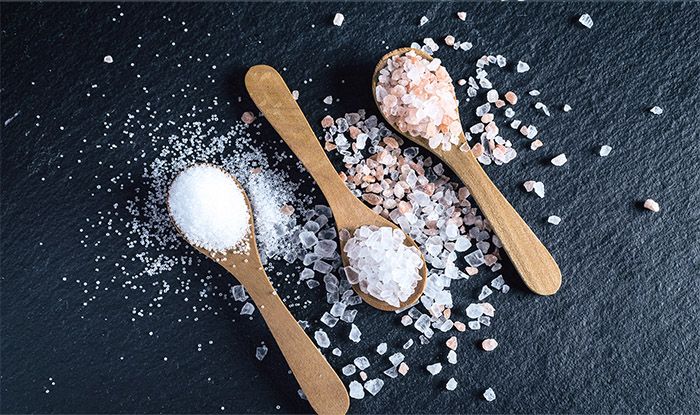 7. How many different kinds of salt are there?
7. How many different kinds of salt are there?7. How many different kinds of salt are there?
Have you ever asked yourself what the difference is between common salt, table salt, and cooking salt? The answer is simple: none at all. They are simply different terms.
However, we do distinguish between three different types of salt in the table salt category: evaporated salt (obtained from brine), rock salt (mined), and sea salt (obtained from seawater). Al three have the same composition of sodium and chlorine.
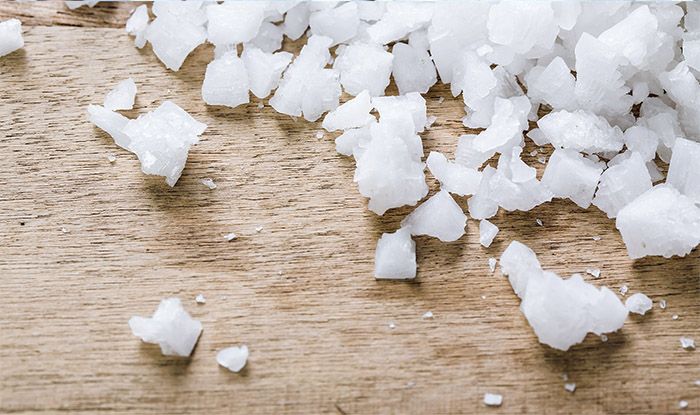 8. Why does salt get lumpy?
8. Why does salt get lumpy?8. Why does salt get lumpy?
Salt is hygroscopic. That means that ,when stored for long periods of time in a humid environment, salt draws water from the air and forms lumps – for example, when steam gets into the open package when adding salt to pasta water. Perhaps you’ve also experienced this on vacation when the air was generally more humid.
Lumpy salt can be crumbled again with a fork or mortar and continue to be used without hesitation for cooking and seasoning. The clumps dissolve completely when cooking.
 9. What is the function of anti-caking agents in salt?
9. What is the function of anti-caking agents in salt?9. What is the function of anti-caking agents in salt?
As described above, salt without an anti-caking agent tends to form lumps (caking). Anti-caking agents ensure that it always stays dry and easy to sprinkle.
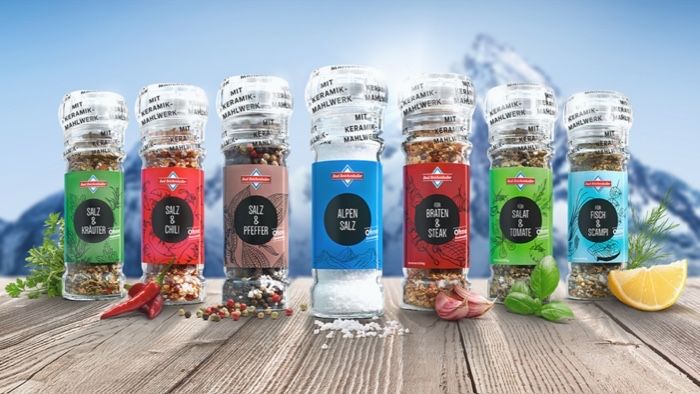 10. Does Bad Reichenhaller also offer products without anti-caking agents?
10. Does Bad Reichenhaller also offer products without anti-caking agents?10. Does Bad Reichenhaller also offer products without anti-caking agents?
Yes. The finer the salt, the greater is the risk that it will harden or lump. Anti-caking agents are not necessary for coarse salt: Bad Reichenhaller Grobes AlpenSalz, all mills, and all Alpensaline products contain no anti-caking agents.
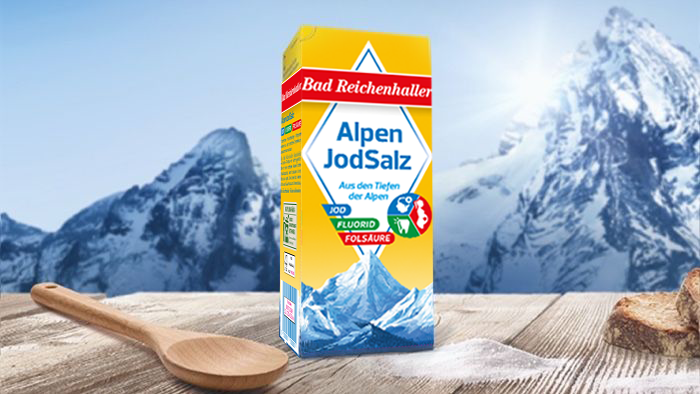 11. Why is salt with folic acid yellow?
11. Why is salt with folic acid yellow?11. Why is salt with folic acid yellow?
Bad Reichenhaller AlpenJodSalz + Fluorid + Folsäure has a slightly yellow hue. This is the visual proof of high product quality, as folic acid is yellow in its natural form. The color has no effect on taste and use.
 12. Why are tears salty?
12. Why are tears salty?12. Why are tears salty?
As everyone knows from personal experience: tears taste salty. In fact, there wouldn’t even be any tear fluid without salt. But why? Tear fluid originates in the lacrimal glands, which are located above the eye. To generate fluid, they need water from the surrounding tissue, and to extract water from the tissue, they need salt – this is why the lacrimal glands secrete salt. Not pure table salt, but a mixture of different electrolytes including potassium.
Many may still remember this from biology class: osmosis means that liquid always moves to where the salt concentration is higher. This also happens in the lacrimal gland. It secretes mineral salts in order to attract fluid from the surrounding tissue and to secrete it again as tear fluid. This is comparable to a sliced tomato, which loses water when it is salted.
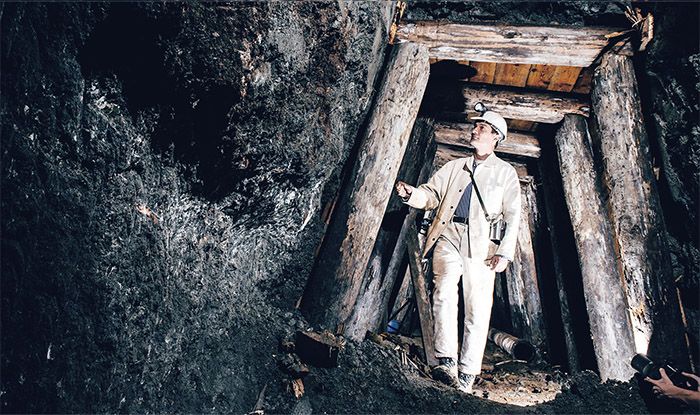 13. How long will salt still exist?
13. How long will salt still exist?13. How long will salt still exist?
Luckily, salt is one of the few raw materials on our earth that will always be available in sufficient quantities in the future. The underground salt deposits alone will last a very long time. If you consider that the amount of salt dissolved in the sea is many times greater than that of rock salt and brine, you can truly say that humanity’s salt supply will never be exhausted.
 14. What importance does salt have in food?
14. What importance does salt have in food?14. What importance does salt have in food?
Usually, we think of the salty taste first – the magic “salt in the soup,” as a German saying goes. Even if the salt cannot be tasted separately from the food or is used as a targeted supplement as with the popular breakfast egg, it is always an intensifying flavor carrier. Both in tart dishes and in a variety of desserts. Yet it is also important for technological reasons: for the production of meat and sausage products, bread and cheese, and preserved vegetable products. The preserving effect of salt, known already in ancient Egypt, is still of huge importance today. Salt is also a vital mineral for the human body. About 90% of essential sodium chloride is supplied to the body by table salt.
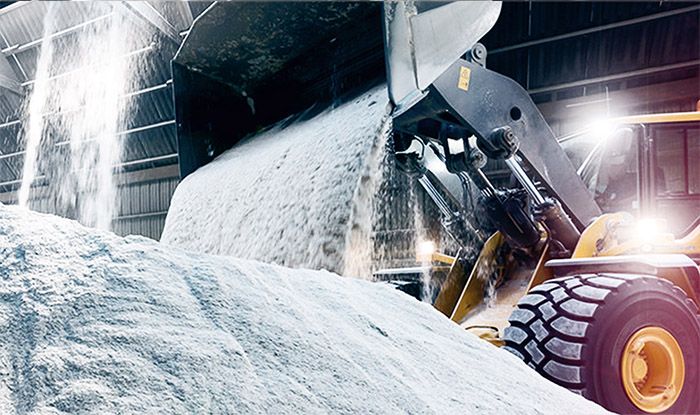 15. What importance does salt have in Industry?
15. What importance does salt have in Industry?15. What importance does salt have in Industry?
Salt plays an important role not only in nutrition, but also in industry and the household. Be it in the steel industry, in dyeworks, in the manufacture of soap and glass, or as a regenerating salt for the dishwasher – without salt, our lives would be different in many ways. And don’t forget de-icing salt, which keeps roads safe in the winter.